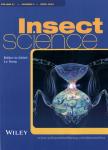Nuptial gifts and female fecundity in the neotropical katydid Conocephalus ictus (Orthoptera: Tettigonidae)
Nuptial gifts and female fecundity in the neotropical katydid Conocephalus ictus (Orthoptera: Tettigonidae)作者机构:Laboratorio de Ecologia UBIPRO UNAM FES Iztacala M6xico Edo. Mexico M6xico
出 版 物:《Insect Science》 (昆虫科学(英文版))
年 卷 期:2015年第22卷第1期
页 面:106-110页
核心收录:
学科分类:0710[理学-生物学] 0821[工学-纺织科学与工程] 07[理学] 08[工学] 09[农学] 082101[工学-纺织工程]
基 金:supported by the Universidad Nacional Autonoma de Me xico through a PAPIIT
主 题:female fitness katydid neotropic spermatophylax
摘 要:In general, female fitness is greatly increased in gift-giving insects. In katydids, this nuptial gift consists of a gelatinous mass produced by accessory glands: the spermato- phylax, which is attached to the ampulla. During mating, males of the neotropical katydid Conocephalus ictus transfer a spermatophylax that is ingested by the females. Fecundity, egg-laying rate and longevity were higher in females that consumed the spermatophylax than in those that did not. Also, female receptivity turned off after mating. Females actively rejected other males by hitting them with their forelegs and moving away. Their refractory period lasted as long as 17 d. Only a few females accepted a 2nd mating and died a few days later. In C. ictus, spermatophylax consumption can be beneficial for both males and females. On one hand, the compounds in the spermatophylax or the ejaculate could prevent or delay females from copulating with rivals, thus avoiding sperm competition. On the other hand, such compounds can improve the females' opportunity to increase their lifespan and fecundity. Moreover, a rise in egg-laying rate may lower the risk of female prereproductive death caused by rapid oviposition. In any case, the boost in female egg laying might also be beneficial for males because their number of offspring increases.



